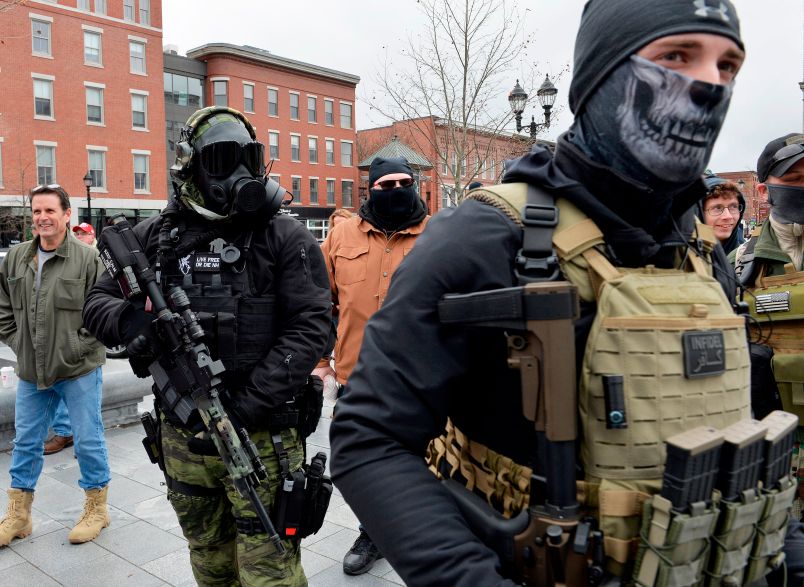The protests we’ve seen in a handful of locations around the country have bamboozled a lot of the national press. Look closely and a lot of the turnout is heavily stocked with militia types and the kinds of groups who turned out for the Charlottesville protests a couple years ago. But the bigger thing is that for now they appear highly orchestrated. In Michigan, they appear to be in part in reaction polling showing severe declines in public support for President Trump. They’re organized by groups funded in large part by the DeVos family. These are basically Trump loyalists supporting Trump at his request and mobilized by key rightist groups. The key question, as TPM Reader TS explains, is whether what starts here as orchestrated and largely inorganic takes on a life of its own and gains political traction. They now have Fox and an incumbent President cheering them on as a demonstration of political identity.
As for the “open the economy” protests right now, I am keeping an eye on them. A modest number of places so far, and participants in the tens to hundreds to around a thousand apiece. These early events look very orchestrated by a few key national professional organizations – and more electorally aimed than early Tea P or resistance protests were in 2009 and 2017. The orchestrators are Americans for Prosperity, Freedom Works, Club for Growth, and the Trump reelect campaign, all national professional operations. The advocacy groups are all ultra-free-market operations that most certainly do not want most Americans to become reliant upon public benefits or more trusting of government.
This is an ideological worry for them. Of course there are also real grassroots participants carrying signs and honking car horns. They might be activists signed up with FW, AFP, Club etc, and certainly they are Trump Twiitter followers. They look exactly like the kinds of people who attend Trump rallies. I do not mean to signal disrespect for them. They feel what they feel. But they are a tiny minority – and you can bet that a lot of their wives and mothers are worried about them going out in public to cluster and perhaps catch the virus. Also, these are such a minority of people that they are hardly going to crowd any shopping malls if those reopen. Keeping an eye on what women think is relevant to the revival of consumerism.
What I will be watching will be to see if these protests spread to hundreds of locales – as Tea Party and resistance protests did in the past – and whether there seem to be regularly meeting local clusters. I don’t think either will happen, given the virus realities/risks, but I do think there are genuine hard-core Trump enthusiasts, all white and heavily middle-aged males, who for a while will pursue this instead of traveling to his big rallies. They love him and want to show it publicly – want to attract TV cameras. They see the pandemic as more of a political threat to their Guy than as a heath risk.
The national orchestrators will try hard to control the targeting and media coverage of all this, aiming it at Democratic governors. That may not entirely work. We have seen a number of these rallies in GOP-run states, too, and probably will see more. Trump is a new factor in all of this, because earlier wildfire local protests were not egged on from the White House in Twitter and in daily TV shows.
The big question will be whether national media fall for the presentation of this as “economic frustration.” That seems dubious to me. Just like the Tea Partiers in 2009-10 were more about enthonationalist resentments than economic suffering, these folks seem similar. They are partisans, and they are also angry that non-big-city areas of states face restrictions for what I strongly suspect many of them see as a virus that hits big cities and minority populations. They want to go about their business and pretend the cities do not exist (not very economically realistic, but very much in line with current partisan polarization).
The catch of course is that viruses do not target demographically or (for long) geographically that much, and this one is spreading to new hot spots in the Midwest, South, etc. Sioux Falls, South Dakota, deserves a lot of attention.
One neat project that maybe the TIMES should do is look to see if these protests are happening in states, regions, cities that are truly on the downslope of infections, or not. I doubt it. Jacksonville FL is a relative virus hotspot, for example, and we see opening the beaches there. Certain GOP governors and cities area really playing with fire, and their people may soon be burned, including the white middle-class ones.






